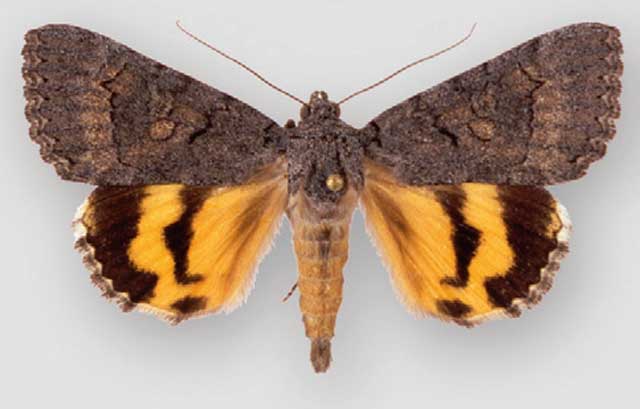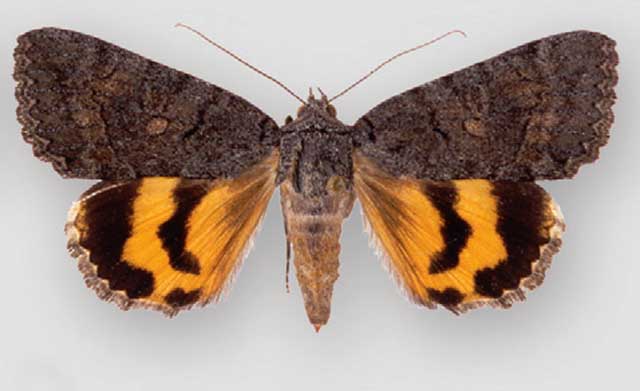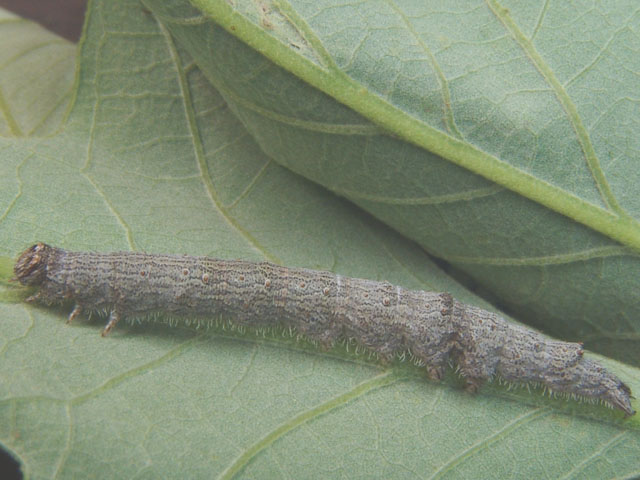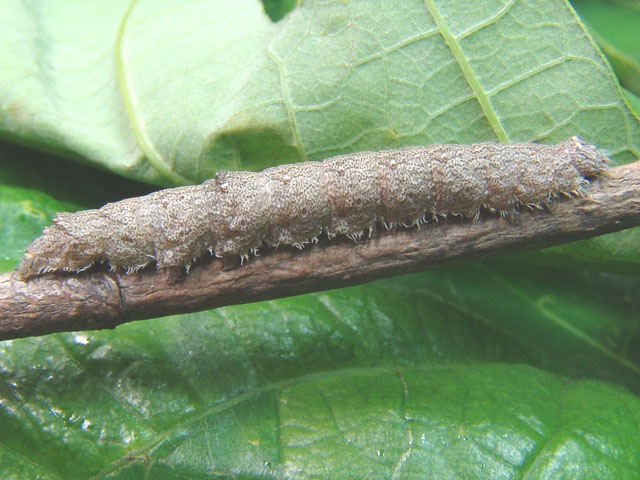Catocala chelidonia uniforma
Catocala chelidonia uniforma
kah-TOCK-uh-lahmchel-ih-DOE-nee-uhmyou-nih-FORM-uh
Hawks 2010

Catocala chelidonia uniforma, Ash Canyon, Huachuca Mtns, Cochise County, Arizona,
Holotype male, June 2, 1981, 1700m, courtesy of David Hawks.
This site has been created by
Bill Oehlke.
Comments, suggestions and/or additional information are welcomed by Bill.
| TAXONOMY:
Superfamily: Noctuoidea
Family: Erebidae, Leach, [1815]
Subfamily: Erebinae, Leach, [1815]
Tribe: Catocalini, Boisduval, [1828]
Genus: Catocala, Schrank, 1802
|
DISTRIBUTION:
Catocala chelidonia uniforma (forewing length: males: 20mm; females: 19.5 mm)
flies in
southeastern Arizona:
Cochise County: Ash Canyon, Huachuca Mountains 1700m; Sierra Vista; Miller Canyon, Huachuca Mountains;
Sunny Flat Campgrounds, Chiricahua Mountains; South Fork Cave Creek; and in
southwestern New Mexico: Hidalgo County, Peloncillo Mountains,
Clanton Draw; Animas Mountains, Bear Canyon.
The forewing dorsal surface is an almost uniform charcoal gray,
with few hoary scales.
The antemedial and postmedial lines are black with the antemedial line fading
away as it nears the inner margin. The subreniform is whitish to yellow, usually visible,
but not in sharp contrast to the rest of the wing.
The hindwing is as per the nominate subspecies with
pale areas of dull yellow orange. The bands are black, the apical spot is dull yellow orange, and the anal
spot is separate from the outer band. There are some dark scales/hairs in the basal area, but this area is not so dark
as in subspecies C. chelidonia occidentalis.
FLIGHT TIMES AND PREFERRED FOOD PLANTS:
Catocala chelidonia uniforma larval hosts are unknown.
Adult moths are on the wing from late May to mid July.
Larval hosts are unknown, but they probably feed on an oak species.
ECLOSION:
Adults eclose from pupae at soil surface.

Catocala chelidonia uniforma, Ash Canyon, Huachuca Mtns, Cochise County, Arizona,
Allotype female, 1700m, courtesy of David Hawks.
SCENTING AND MATING:
Catocala chelidonia uniforma females
emit an airbourne pheromone and males use their antennae to track the
scent plume.
EGGS, CATERPILLARS, COCOONS AND PUPAE:
Eggs are deposited
on tree bark in the fall and hatch the following spring.

Catocala chelidonia subspecies ??, third instar, courtesy of Gabriel Larrabee.
copyright

Catocala chelidonia subspecies ??, fifth instar, courtesy of Gabriel Larrabee.
copyright
Larval Food Plants
Listed below are primary food plant(s) and alternate food plants. It is hoped that this alphabetical listing followed by the common
name of the foodplant will prove useful. The list is not exhaustive, although some species seem very host specific.
Experimenting with closely related foodplants is worthwhile.
Return to Main Index
This page is brought to you by Bill Oehlke and the
WLSS. Pages are on space rented from Bizland. If you would like to become a "Patron of the Sphingidae/Catocala Sites", contact Bill.
Please send sightings/images to Bill. I will do my best to respond to requests for identification help.
Enjoy one of nature's wonderments: Live Saturniidae (Giant Silkmoth) cocoons.

| 
To show appreciation for this site, click on the flashing
butterfly to the left, a link
to many worldwide insect sites.
|
Visit California Catocala
immatures
Visit Catocala delilah Species Complex; Author: David Hawks.





